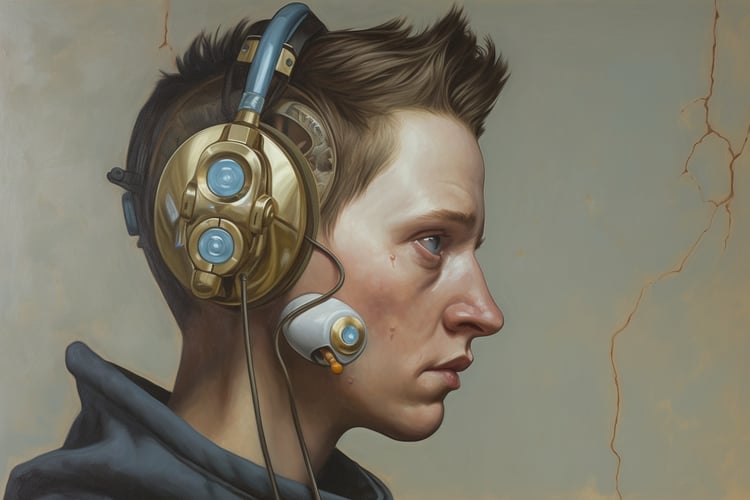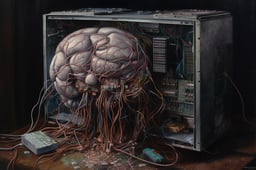Machine perception refers to the capability of machines to interpret and make sense of sensory information from the environment. This information can include data obtained from sensors such as cameras, microphones, or other sensors. The machine then processes this data, analyzes it, and draws conclusions from it.
Machine perception plays a significant role in enabling machines to interact with the physical world, understand human behavior and communication, and make decisions based on sensory information. In essence, machine perception is the foundation of many technologies such as autonomous driving, computer vision, speech recognition, and natural language processing.
Types of Machine Perception
There are various types of machine perception, including computer vision, speech recognition, natural language processing, and sensor fusion.
- Computer vision involves the use of computers to interpret and understand visual data from digital images or videos. This technology has several applications such as facial recognition, object detection, and tracking.
- Speech recognition involves the ability of a machine to understand and interpret spoken language. Speech recognition technology has various applications such as virtual assistants, dictation software, and customer service bots.
- Natural Language Processing (NLP) enables computers to understand and interpret human language in a more nuanced way. NLP technology has several applications, including chatbots, automated customer service systems, and sentiment analysis.
- Sensor fusion involves the integration of data from multiple sensors, such as cameras and LIDAR, to create a more comprehensive understanding of the environment. This technology is particularly useful for autonomous vehicles, robotics, and drones.
Examples of Real-World Machine Perception Applications
One of the earliest applications of machine perception was optical character recognition, developed by Emanuel Goldberg in 1914 . His character recognition machine could read characters and convert them into standard telegraph code, demonstrating the potential for machines to perceive symbols and text. Since Goldberg's initial work, the field has advanced rapidly. Today, machine perception is used extensively in:
- Autonomous Vehicles: Machine perception is a critical technology for enabling autonomous vehicles to operate safely and efficiently. Autonomous vehicles use a combination of computer vision, LIDAR, and radar to perceive their surroundings and make decisions in real-time. For example, Tesla's Autopilot system uses machine perception to detect objects, lanes, and signs, and to make decisions based on this information.
- Healthcare: Machine perception technology is being used to diagnose diseases and conditions by analyzing medical images such as X-rays, CT scans, and MRIs. For example, Google's DeepMind AI system can diagnose eye diseases by analyzing retinal images with a high degree of accuracy.
- Robotics: Machine perception is essential for robots to understand their environment and interact with it effectively. For example, Boston Dynamics' Spot robot uses computer vision and sensor fusion to navigate through environments, avoid obstacles, and perform tasks such as inspecting and monitoring.
- Security: Machine perception is being used to improve security systems by analyzing video footage and detecting unusual behavior or objects. For example, AI-powered security cameras can recognize faces and identify individuals, detect intruders, and alert authorities to potential threats.
How Machine Perception Works
Machine perception works by processing and analyzing sensory data using machine learning algorithms. The process begins with the collection of data from various sensors, such as cameras, microphones, or other sensors. The data is then preprocessed to remove noise and enhance its quality.
Next, the preprocessed data is fed into machine learning algorithms, such as convolutional neural networks (CNNs), recurrent neural networks (RNNs), or support vector machines (SVMs), which analyze the data and extract relevant features. These features are then used to make predictions or decisions based on the specific application of the machine perception technology.
For example, in computer vision applications, the machine learning algorithms analyze the visual data to detect objects, recognize faces, or track movement. In speech recognition applications, the algorithms analyze the audio data to transcribe speech, identify individual speakers, or perform voice commands.
Limitations and Challenges of Machine Perception
While machine perception has the potential to revolutionize various industries and applications, there are still several limitations and challenges that need to be addressed. Here are a few examples:
Limited Understanding of Context
Machine perception systems often struggle to understand the context in which they operate. For example, an image recognition system may identify an object in a photo, but it may not be able to understand the scene or the significance of the object in the context of the overall image.
Limited Data Availability
Machine perception algorithms require large amounts of high-quality data to function effectively. However, in some cases, such data may not be available or may be difficult to collect. An example of this is within the development of autonomous vehicles. While there is a significant amount of data available on driving scenarios and road conditions, there may be limited data on rare or unusual situations such as extreme weather conditions or unexpected road obstacles. This can make it difficult for autonomous vehicles to accurately perceive and respond to these situations, potentially leading to safety concerns.
Biases in Data and Algorithms
Machine perception systems can be biased due to the biases present in the data used to train them or in the algorithms themselves. This can lead to inaccurate or unfair predictions and decisions. An example of bias in algorithms is when facial recognition systems have been shown to have higher error rates for people with darker skin tones, due to the lack of diversity in the training data.
Security and Privacy Concerns
Machine perception systems often collect and process sensitive data, which can raise concerns about security and privacy. Hackers or malicious actors could potentially access or misuse this data, leading to serious consequences. For instance, a machine perception system used in a hospital to monitor patient vitals could potentially be hacked, allowing unauthorized access to sensitive medical information and compromising patient privacy.
What is the Future of Machine Perception?
Currently we have an excellent speech recognition model in OpenAI Whisper, the best object detection algorithm in YOLOv7, and the NLP platform HuggingFace which provides high-quality datasets and state-of-the-art models. So I believe the future of machine perception lies in multimodality, where advanced systems can process image, speech, and text inputs to provide a complete understanding of our surroundings.
We already have multimodal systems like DALLE-2, an image generation model that generates images from text prompts, and GPT-4, which can generate text from both images and text prompts. Expect significant developments in this space in the near future, with Google and OpenAI researching in the field of multimodal models.
In the future, these systems will process video and audio in real-time to enable enhanced analysis and pattern recognition. Furthermore, progress in agent-based systems could enable artificial general intelligence (AGI).
AGI systems will have human-level intelligence and the ability to perform any intellectual task from generating art to writing books using multiple sensory information.
Want to learn more about AI and machine learning? Check out the following resources:
FAQs
Is machine perception limited to visual data?
No, machine perception includes the ability to interpret and analyze data from various sensors, including audio, touch, and other types of data.
How does machine perception differ from machine learning?
Machine perception is concerned with the interpretation and analysis of sensory data, while machine learning focuses on the development of algorithms that can learn from data to make predictions or decisions.
What are some of the challenges associated with machine perception?
Some of the challenges include the processing of large amounts of data in real-time, dealing with noisy or incomplete data, and the need for more powerful and efficient hardware.
Can machine perception be used for social applications?
Yes, machine perception is already being used in social applications, such as emotion recognition in video content and chatbots for mental health support.
How important is machine perception in the development of AI?
Machine perception is a fundamental technology for the development of AI, enabling machines to interact with the physical world and understand human behavior and communication.
What are some of the ethical considerations associated with machine perception?
There are several ethical considerations, such as privacy concerns related to the collection and use of personal data, biases in algorithms and data, and the potential for misuse of machine perception technologies. It is essential to consider these issues carefully and ensure that machine perception is used in a responsible and ethical manner.

As a certified data scientist, I am passionate about leveraging cutting-edge technology to create innovative machine learning applications. With a strong background in speech recognition, data analysis and reporting, MLOps, conversational AI, and NLP, I have honed my skills in developing intelligent systems that can make a real impact. In addition to my technical expertise, I am also a skilled communicator with a talent for distilling complex concepts into clear and concise language. As a result, I have become a sought-after blogger on data science, sharing my insights and experiences with a growing community of fellow data professionals. Currently, I am focusing on content creation and editing, working with large language models to develop powerful and engaging content that can help businesses and individuals alike make the most of their data.



